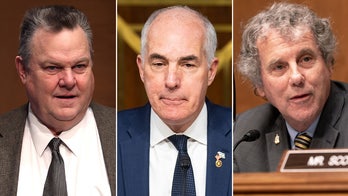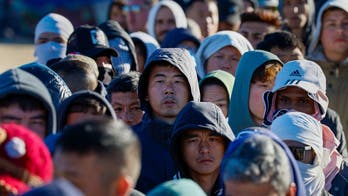Fox News Flash top headlines for July 1
Fox News Flash top headlines are here. Check out what's clicking on Foxnews.com.
Justice Clarence Thomas celebrated his 74th birthday last week with a gift he delivered himself — authoring the majority opinion in a gun rights case that will have nationwide implications.
It was the capstone to a monumental, but splintered term that saw the 6-3 conservative majority prevail on a bounty of hot-button issues and building momentum to a dramatic rightward shift that shows no sign of slowing.
As the senior associate justice and de facto driver of the conservative wing, Thomas this year used his deft leadership in the court:
– Striking down Roe v. Wade and the nationwide, constitutional right to abortion, returning the issue to the states
– Making it easier for law-abiding citizens to carry a concealed firearm in public places
– Limiting the Biden administration's ability to enforce a number of executive policies, from federal COVID-related workplace mask mandates to climate change regulations
– Favoring parents seeking to use public tuition assistance to send their children to religious schools and favoring public prayer on a high school football field.
SUPREME COURT’S EPA DECISION SPARKS 5 WACKY MEDIA MELTDOWNS
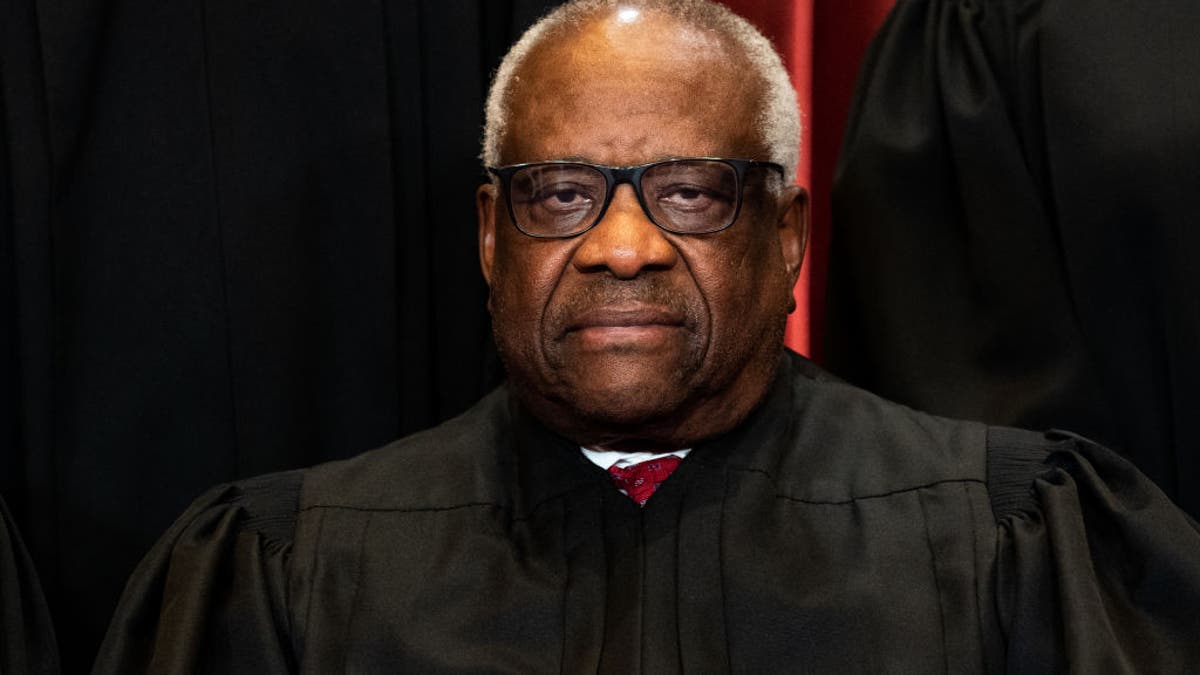
Associate Justice Clarence Thomas sits during a group photo of the justices at the Supreme Court in Washington, D.C., April 23, 2021. (Erin Schaff-Pool/Getty Images)
"On all these issues, it's all aligning with where Clarence Thomas has been for the past 30 years," said Mark Paoletta, a close friend who is coauthor of a new book with Michael Pack, "Created Equal: Clarence Thomas in His Own Words."
With Chief Justice John Roberts adopting a more measured, institutionalist stance on selected, hot-button issues like abortion and immigration, Thomas has emerged as the quiet voice of an unapologetic super-majority on the Supreme Court that truly blossomed this term with a series of conservative victories.
And there will be more opportunities next term, when the court will hear appeals on affirmative action in college admissions, religious freedom for business owners and federal election disputes.
Liberal Outrage
Thomas may be a low-key member of the court, but his hard-won power has caught the attention of the left. His vote in the abortion decision inspired liberal outrage, especially in his concurring opinion.
"In future cases, we should reconsider all of this Court’s substantive due process precedents, including Griswold, Lawrence, and Obergefell," he wrote, referring to past rulings dealing with access to contraception, same-sex relationship and same-sex marriage and underlying privacy, due process and equal protection rights.
No other member of the court shared Thomas' sweeping views on that point, but progressive leaders sounded the alarm.
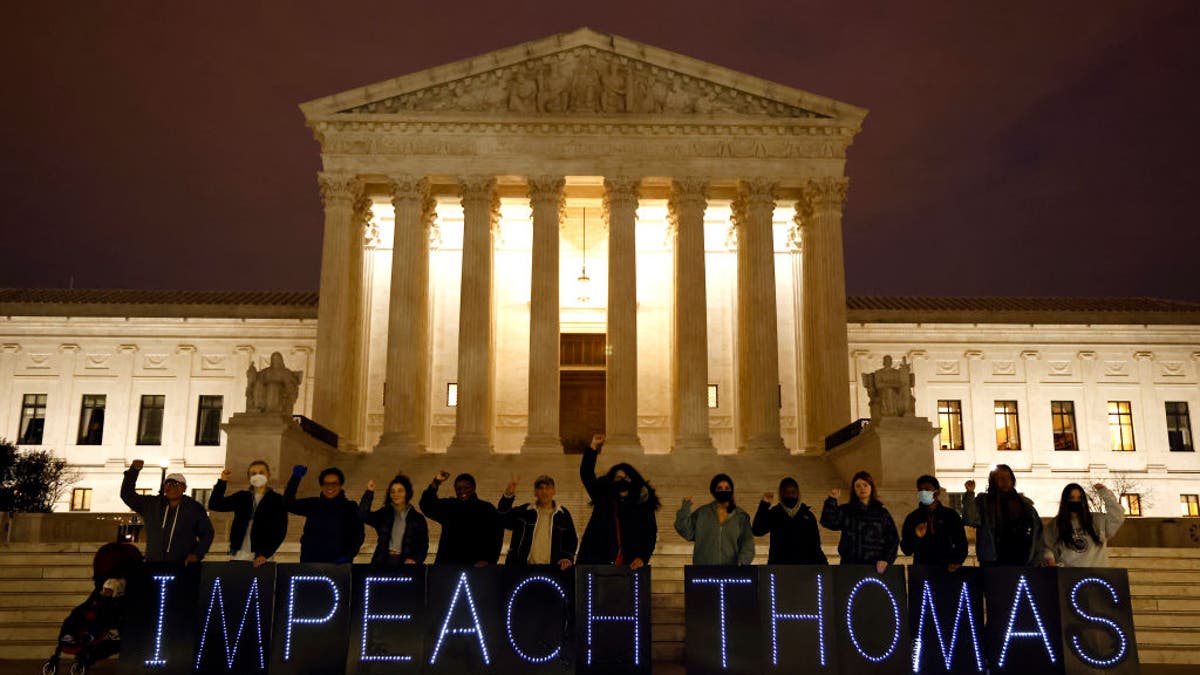
MoveOn activists call for the impeachment of Justice Clarence Thomas outside the U.S. Supreme Court March 30, 2022, in Washington, D.C. (Paul Morigi/Getty Images for MoveOn)
"When someone in the crowd at [a gay pride] event this weekend yelled 'F*** Clarence Thomas,' I yelled it right back. And I meant it," said Chicago Mayor Lori Lightfoot (D), who is openly gay. "Clarence Thomas wants to make women and members of the LGBTQ+ community second-class citizens. His beliefs are a direct attack on my personhood, and I will condemn them EVERY CHANCE I GET."
Some Democrats went further, twisting Thomas' jurisprudence in harshly personal terms.
Hillary Clinton, who along with her husband attended Yale Law School with Thomas (along with Justice Samuel Alito), this week called Thomas "a person of resentment, grievance, anger" and saying "women are going to die" because of the abortion ruling Thomas approved.
The justice's defenders pushed back.
"The Left is racist," Paoletta told Fox News. "They expect Clarence Thomas to think the way they think a Black man should based on the color of a person's skin. Clarence Thomas for 40 years has refused to do that, and they want to destroy him. The bottom line is that Clarence Thomas doesn't care at all what they think."
His house has been picketed, along with those of other conservative justices', both before and after the abortion ruling in Dobbs v. Jackson Women's Health Organization.
Thomas' Time
The nation's second Black justice has long done things his way, overcoming a troubled childhood and his own unique experiences with discrimination, both before and during the modern civil rights movement.
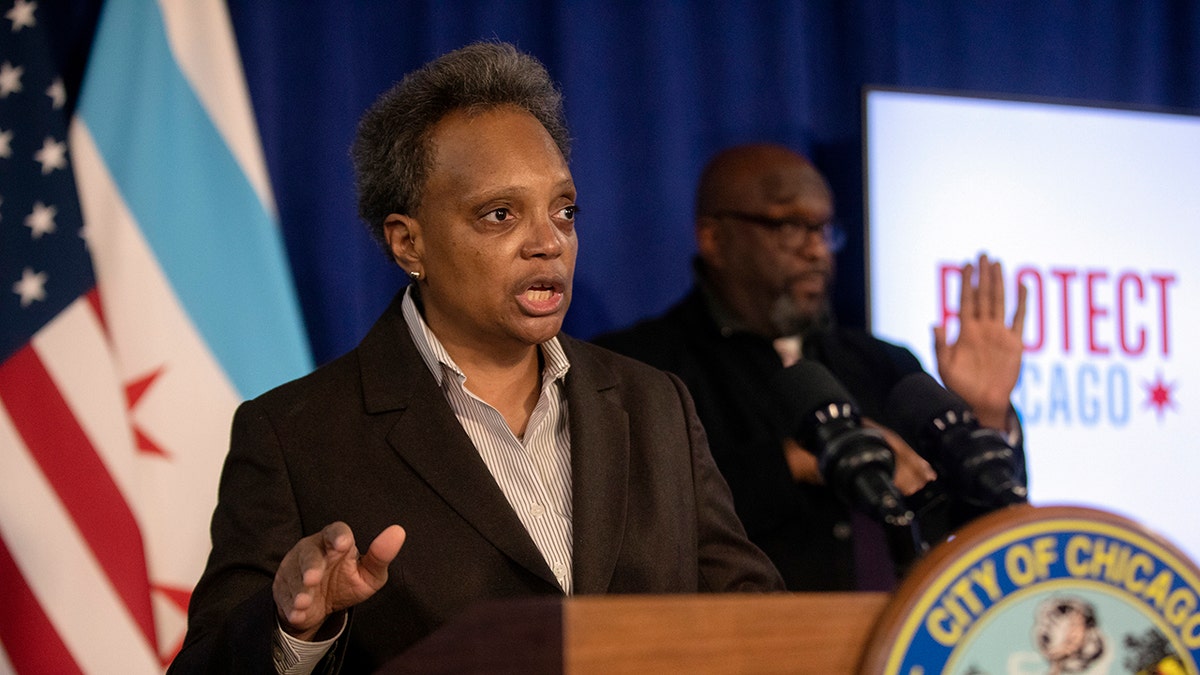
Chicago Mayor Lori Lightfoot speaks during a press conference at City Hall Dec. 21, 2021, in Chicago. (Erin Hooley/Chicago Tribune via AP)
The curving path to his conservative jurisprudence has left Thomas something of an outcast among many African Americans.
"People who will get very upset if someone said all Blacks look alike are really comfortable that all Blacks ought to think alike," he once said. "I think it's odd."
"There are a lot of people who don't like the fact that he breaks their expectations," said Carrie Severino, chief counsel at the Judicial Crisis network and a former Thomas law clerk. "They expect him as an African American to be toeing the liberal line, and he's his own man. You know, he's his own man among conservatives."
That consistency in his conservative views has earned him a quietly influential power base among his colleagues, which only recently has begun to attract public notice.
Roberts' Role
Thomas' rise in some ways has come at the expense of Roberts, himself a lifelong conservative.
The chief justice was in the majority of 95% of the cases decided this term, tied with Justice Brett Kavanaugh, according to scotusblog.com. Justice Amy Coney Barrett was not too far behind at 93%.
Roberts sided with conservatives on gun rights, the death penalty, workplace mask mandates, EPA authority over greenhouse gases and two high-profile religious liberty appeals.
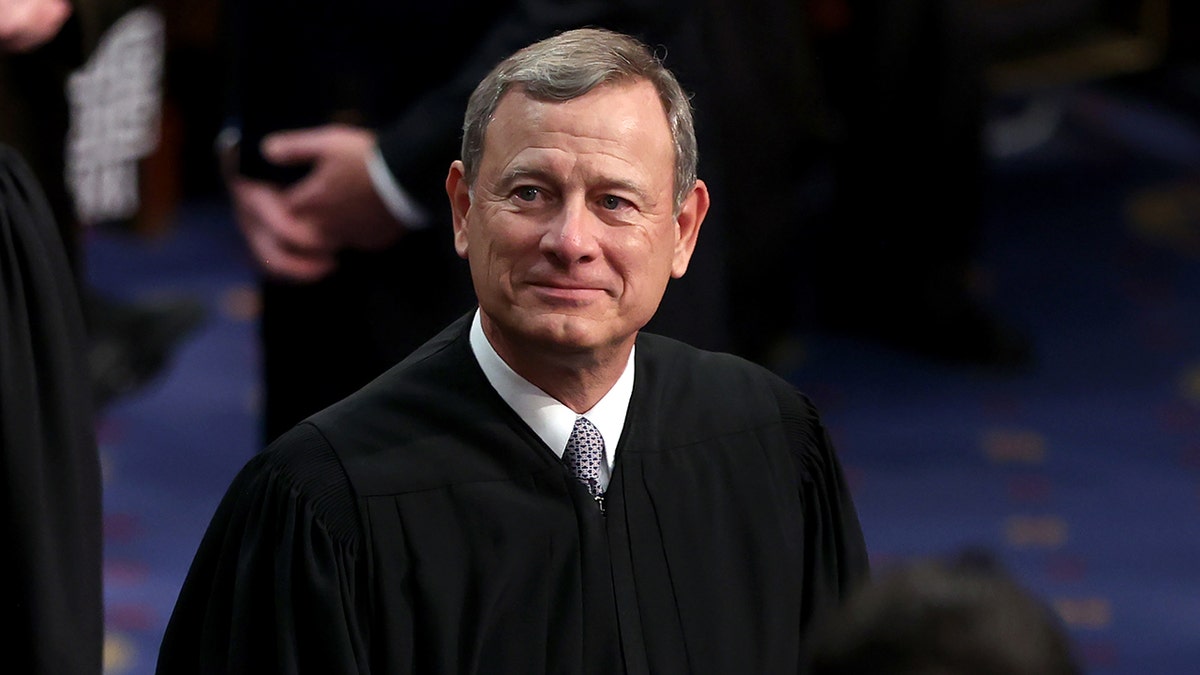
Supreme Court Chief Justice John Roberts prior to President Biden giving his State of the Union address during a joint session of Congress at the U.S. Capitol March 1, 2022, in Washington. (Julia Nikhinson-Pool/Getty Images)
He joined liberals on a separate workplace mask mandate and the "remain in Mexico" immigration asylum policy.
But it was the chief justice's compromise position on abortion that earned him enmity from the left and right.
He made clear in his concurrence opinion he would have upheld — in limited fashion — the nationwide pre-viability right to abortion but allowed Mississippi's ban after 15 weeks to stand.
None of his colleagues bought into that approach, but he stuck to his principles and refused to endorse his conservative colleagues' decision to jettison Roe. The 67-year-old Roberts owns the reputation, deservedly or not, as the man in the middle, whose votes on a range of hot-button issues often proved decisive over a 17-year high court career.
While mostly hewing to the right, the President George W. Bush-appointed Roberts has flashed his own independent streak over the years on Obama Care and now the abortion ruling.
His supporters see it as a principled stance to avoid further embroiling the court in controversy, when a less-is-best approach might have been best at this divisive time in the country.
That ruling overturning Roe brought a predictably partisan response and raised anew questions about public confidence in the court as a fair arbiter of the law.
"I think it's another thing entirely if you're calling into question the very legitimacy of the Supreme Court and somehow suggesting that it's illegitimate or that the justices aren't acting in good faith or are acting to implement an extreme conservative agenda, that sort of thing," said Thomas Dupree, a former Bush Justice Department official and now an appellate attorney. "I think that's wrong, and I think, ultimately, it's harmful and destructive to our country."
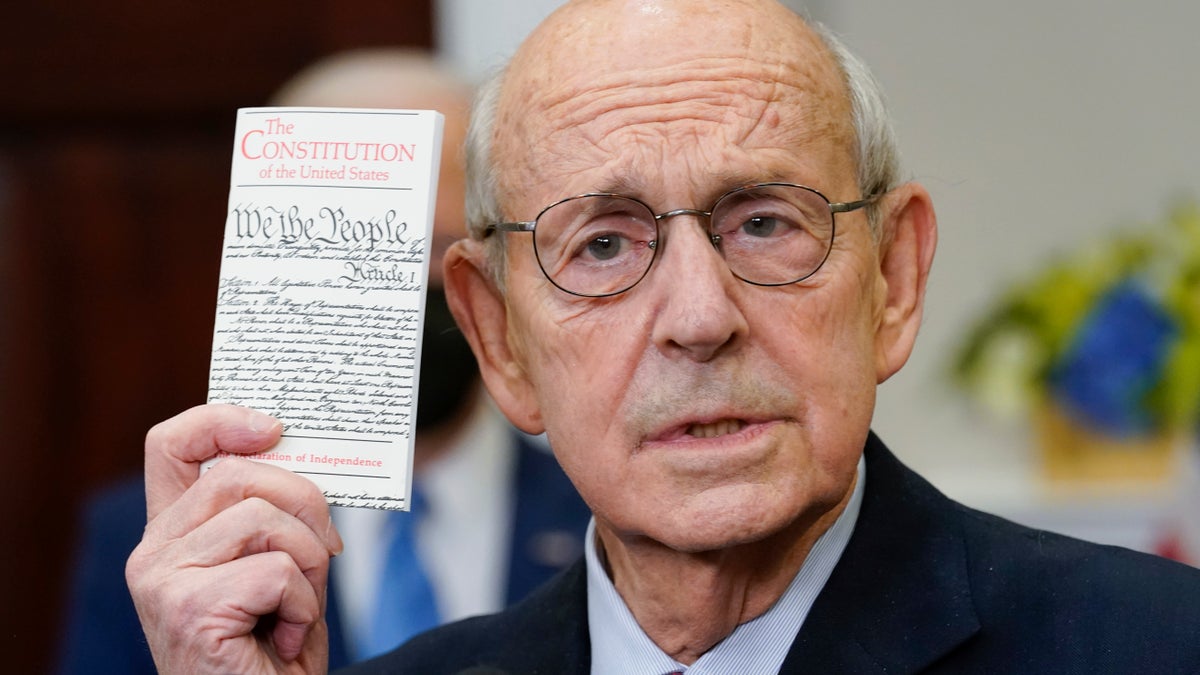
Supreme Court Associate Justice Stephen Breyer holds up a copy of the United States Constitution as he announces his retirement in the Roosevelt Room of the White House in Washington Jan. 27, 2022. (AP Photo/Andrew Harnik, File)
The "chief," as he is informally known around the court, has publicly stated his long-term efforts to forge consensus with his colleagues whenever possible, show respect for precedent and preserve the court's reputation.
In a 2014 speech, he said the "partisan rancor" among members of Congress "impedes their ability to carry out their functions. I don't want this to spill over and affect us."
But it has, in the view of almost every court watcher and the public at large.
A Fox News poll in late June found just 39% approve of the Supreme Court's job performance, with 48% disapproving.
Other surveys in recent months have shown public confidence in the Supreme Court at historic lows over whether the American people trust the justices to act in country's best interests.
Frustrated Friends
Sources close to both men say Roberts and Thomas hold deep mutual respect for each other, and the two remain good friends on and off the bench.
With Justice Stephen Breyer's retirement, Thomas becomes the oldest member of the court. He was visibly moved last November when the chief honored his colleague's 30 years as a justice with a tribute delivered in a public courtroom session.
Thomas' smile was beaming, and he wrapped his arm around Roberts with affection on the bench.
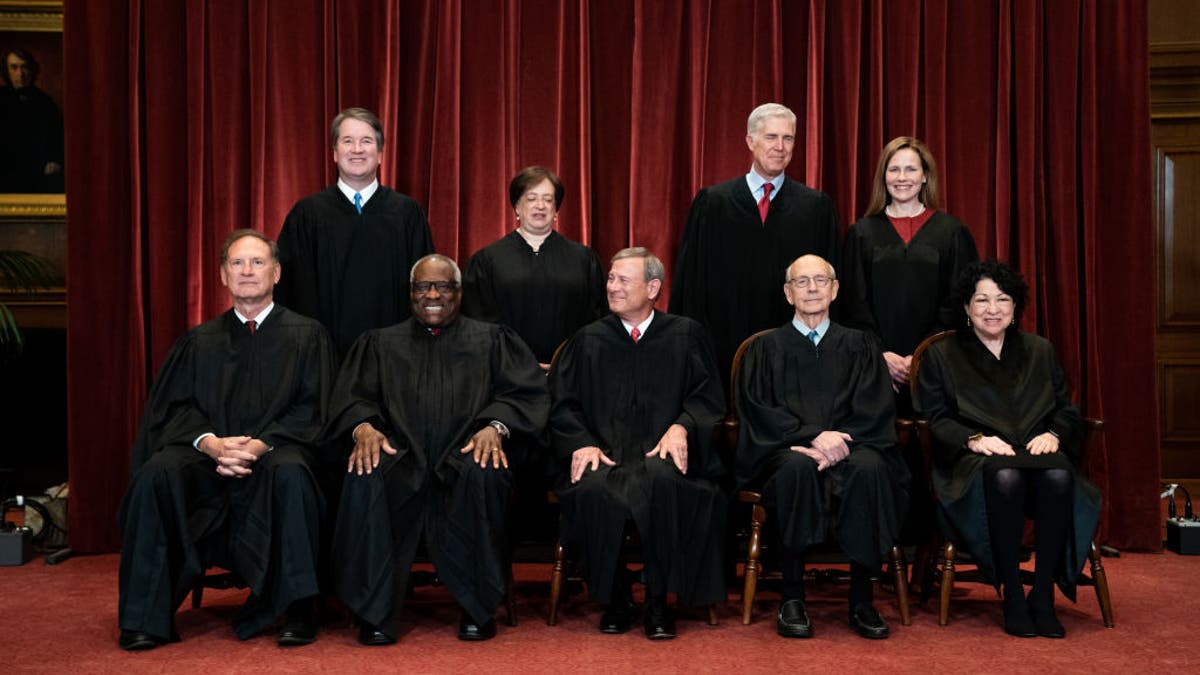
Members of the Supreme Court pose for a group photo at the Supreme Court in Washington, D.C. April 23, 2021. Seated from left: Associate Justice Samuel Alito, Associate Justice Clarence Thomas, Chief Justice John Roberts, Associate Justice Stephen Breyer and Associate Justice Sonia Sotomayor, Standing from left: Associate Justice Brett Kavanaugh, Associate Justice Elena Kagan, Associate Justice Neil Gorsuch and Associate Justice Amy Coney Barrett. (Erin Schaff-Pool/Getty Images)
But months later, many saw remarks made by Thomas in a legal conference to be a subtle slap at the chief's leadership, recalling how things were like before Roberts took over in 2005.
"We actually trusted each other," Thomas said. "We may have been a dysfunctional family, but we were a family, and we loved it."
It came just days after Politco obtained a leaked draft opinion in the Dobbs case, which previewed the eventual outcome two months later. Internal strife over that case spilled out messily in the public, and Thomas seemed visibly frustrated.
An internal leak investigation by the court has been ongoing, but there are no signs it has singled out a culprit.
Many suspect it was a disgruntled law clerk, and Fox News has reported court officials were in the process of asking 37 clerks to the justices to turn over their personal cell phones and submit to an affidavit. Their one-year apprenticeships expire in mid-July, so there may be urgency for Roberts to finish the probe before the clerks leave.
"Look where we are, where now that trust or that belief is gone forever," Thomas said shortly after the leak became public. "When you lose that trust, especially in the institution that I’m in, it changes the institution fundamentally. You begin to look over your shoulder. It’s like kind of an infidelity that you can explain ... but you can’t undo it."

Associate Supreme Court Justice Clarence Thomas. (Drew Angerer/Getty Images)
Thomas is not exaggerating. The leak has rocked the internal dynamics of the court that promises to carry on indefinitely.
Another changing dynamic will come with the newest Justice Ketanji Brown Jackson taking over this week for the retired Breyer. Her colleagues will watch to see how quickly she adjusts to a fractured court and whether she will be the strong progressive voice Biden and her supporters have promised.
Looking Ahead and Looking Back
Thomas may hold sway over his conservative colleagues, but his power is not unbounding. His consistent — some say rigid — conservative principles put him in the majority in 81% of the cases decided this term. And he was the lone dissenter in three important cases, tying Justice Sonia Sotomayor, who may arguably be Thomas' liberal counterpoint on the court. She was in the majority only 58% of the time, lowest among the nine.
But on the biggest cases with the highest stakes, the Thomas imprint was all over this term. With success comes inevitable scrutiny and criticism. Demands from Democrats he step down from the court. Demands he recuse in any future cases over January 6 and efforts to overturn the 2020 presidential election. Pressure to resign his lifetime appointment. Threats of impeachment.
Complicating matters is controversy over the advocacy of his wife Virginia "Ginni" Thomas, who the House Select Committee to Investigate the January 6 Attack on the U.S. Capitol has asked to speak with.
The conservative activist allegedly was in contact with top White House officials and Trump lawyers over election integrity claims in the days leading up to and including the Jan. 6 riots. The couple has said they keep their professional lives separate.
Thomas has given no indication he would recuse in any cases and has also said he has no plans of retiring anytime soon.
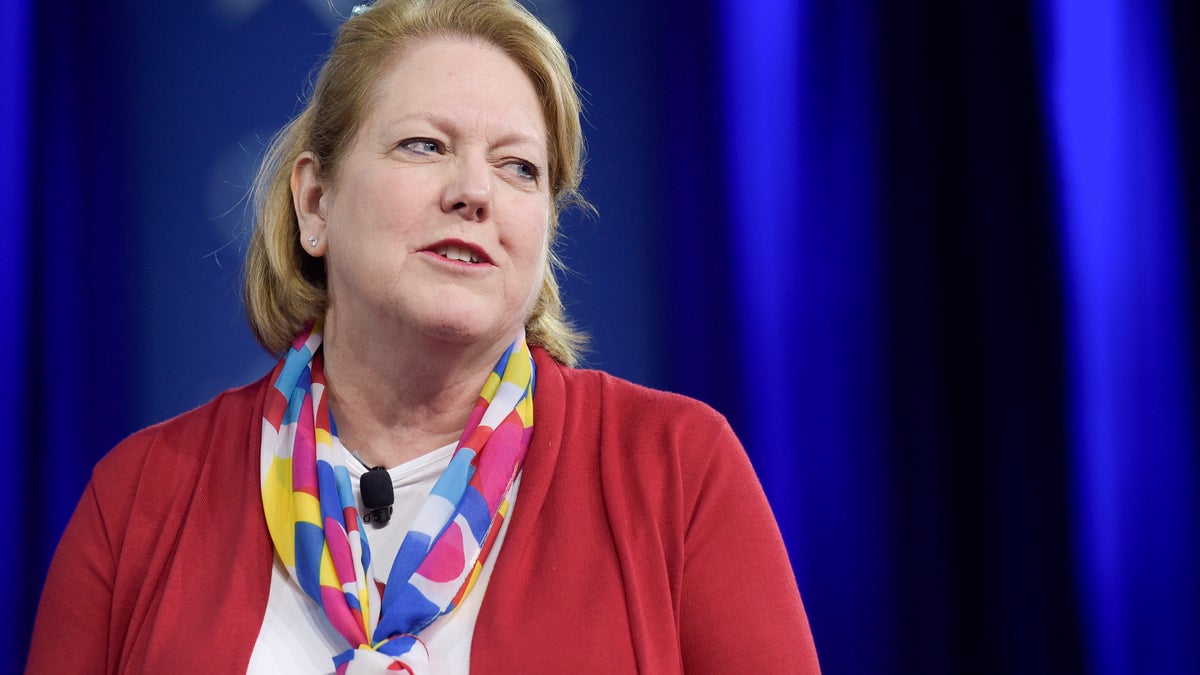
Virginia "Ginni" Thomas, wife of Supreme Court Associate Justice Clarence Thomas, speaks at the Conservative Political Action Conference (CPAC) in Oxon Hill, Md., Feb. 23, 2017. (AP Photo/Susan Walsh, File)
He has described himself as a marathon runner playing for the long term. Where once his views were considered far outside the mainstream, Thomas' influence is now at a zenith, occupying the heart of a robust conservative majority.
And Thomas' legacy stretches beyond the Supreme Court. Ten former law clerks he mentored are now federal judges.
But in recent remarks, a nostalgic Thomas hinted his court — and the country at large — will continue to fray.
CLICK HERE TO GET THE FOX NEWS APP
"I'm the only member of the court ever to have been born in 1940s. Everybody else is after that now," he said. "And we're now dealing with a post-World War II generation. And, as you see it play out in society, I think you're going to see it play out in the institution. So what's the difference? It's a different set of people who grew up in a different era. And I don't know where that's going to lead you, but we know it's different."



